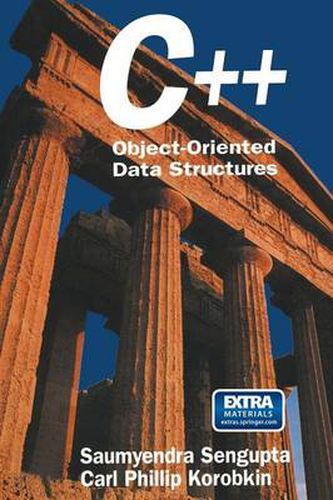Readings Newsletter
Become a Readings Member to make your shopping experience even easier.
Sign in or sign up for free!
You’re not far away from qualifying for FREE standard shipping within Australia
You’ve qualified for FREE standard shipping within Australia
The cart is loading…






This title is printed to order. This book may have been self-published. If so, we cannot guarantee the quality of the content. In the main most books will have gone through the editing process however some may not. We therefore suggest that you be aware of this before ordering this book. If in doubt check either the author or publisher’s details as we are unable to accept any returns unless they are faulty. Please contact us if you have any questions.
This book provides a broad coverage of fundamental and advanced con cepts of data structures and algorithms. The material presented includes a treatment of elementary data structures such as arrays, lists, stacks, and trees, as well as newer structures that have emerged to support the process ing of multidimensional or spatial data files. These newer structures and algorithms have received increasing attention in recent years in conjunc tion with the rapid growth in computer-aided design, computer graphics, and related fields in which multidimensional data structures are of great interest. Our main objective is to mesh the underlying concepts with application examples that are of practical use and are timely in their implementations. To this end, we have used mainly the Abstract Data Structure (or Abstract Data Type (ADT)) approach to define structures for data and operations. Object-oriented programming (OOP) methodologies are employed to im plement these ADT concepts. In OOP, data and operations for an ADT are combined into a single entity (object). ADTs are used to specifiy the objects-arrays, stacks, queues, trees, and graphs. OOP allows the pro grammer to more closely mimic the real-world applications. This OOP is more structured and modular than previous attempts. OOP has become de facto state-of-the-art in the 1990s.
$9.00 standard shipping within Australia
FREE standard shipping within Australia for orders over $100.00
Express & International shipping calculated at checkout
Stock availability can be subject to change without notice. We recommend calling the shop or contacting our online team to check availability of low stock items. Please see our Shopping Online page for more details.
This title is printed to order. This book may have been self-published. If so, we cannot guarantee the quality of the content. In the main most books will have gone through the editing process however some may not. We therefore suggest that you be aware of this before ordering this book. If in doubt check either the author or publisher’s details as we are unable to accept any returns unless they are faulty. Please contact us if you have any questions.
This book provides a broad coverage of fundamental and advanced con cepts of data structures and algorithms. The material presented includes a treatment of elementary data structures such as arrays, lists, stacks, and trees, as well as newer structures that have emerged to support the process ing of multidimensional or spatial data files. These newer structures and algorithms have received increasing attention in recent years in conjunc tion with the rapid growth in computer-aided design, computer graphics, and related fields in which multidimensional data structures are of great interest. Our main objective is to mesh the underlying concepts with application examples that are of practical use and are timely in their implementations. To this end, we have used mainly the Abstract Data Structure (or Abstract Data Type (ADT)) approach to define structures for data and operations. Object-oriented programming (OOP) methodologies are employed to im plement these ADT concepts. In OOP, data and operations for an ADT are combined into a single entity (object). ADTs are used to specifiy the objects-arrays, stacks, queues, trees, and graphs. OOP allows the pro grammer to more closely mimic the real-world applications. This OOP is more structured and modular than previous attempts. OOP has become de facto state-of-the-art in the 1990s.